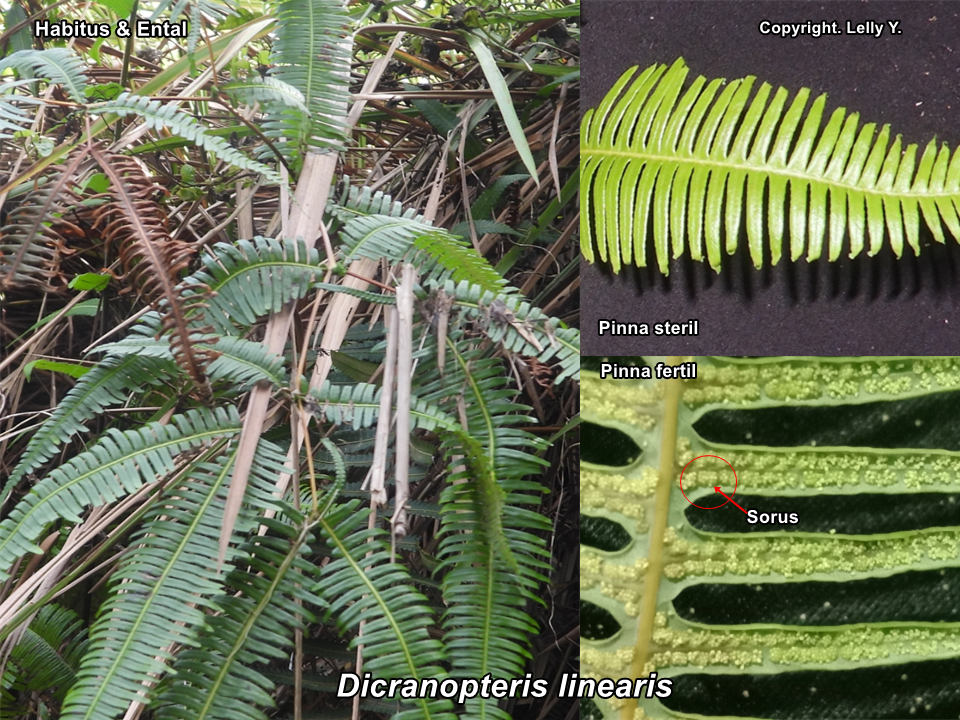Dicranopteris linearis
(Burm.f.) Underw.
Gleicheniaceae
Nama : Resam.
Deskripsi : Terestrial, rimpang pendek, tertanam di dalam tanah, sering bercabang banyak dan memanjat pada pohon didekatnya, merimbun. Batang semu silinder, kaku, bercabang, hijau-kekuningan sampai coklat kehitaman, rakis ramping. Ental majemuk, pinak daun tersusun berhadapan, bercuping sangat dalam. Ental steril dan fertil memiliki bentuk yang sama, hijau gelap di permukaan sisi atas, dan hijau pudar di sisi bawah; sisi bawah daun fertil berlilin. Sorus bulat dan menepung, terletak pada daun fertil sisi bawah, dari pangkal cuping sampai bagian ujung, hijau terang sampai hijau-kekuningan.
Ekologi : Pesebaran alami dari kawasan tropis sampai subtropis dunia lama, yaitu kawasan Afrika, Australia, dan Asia termasuk kawasan Malesia. Pada umumnya tumbuh pada hutan dataran rendah dan areal yang sudah terdegredasi sedang sampai sangat terdegredasi pada lahan kering atau lahan basah. Pada habitat liar dapat dijumpai dengan formasi padang resam dominan atau berupa spot-spot populasi. Tumbuh memanjat ke pohon terdekat dan sangat rimbun dan banyak ditemukan di pinggir jalan lahan. Referensi: Piggott, 1996.
Kegunaan : –

